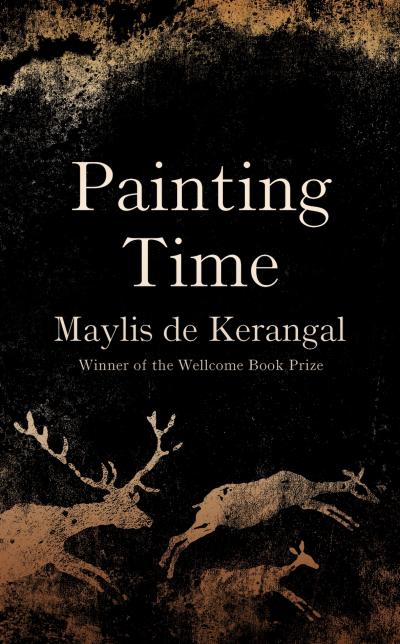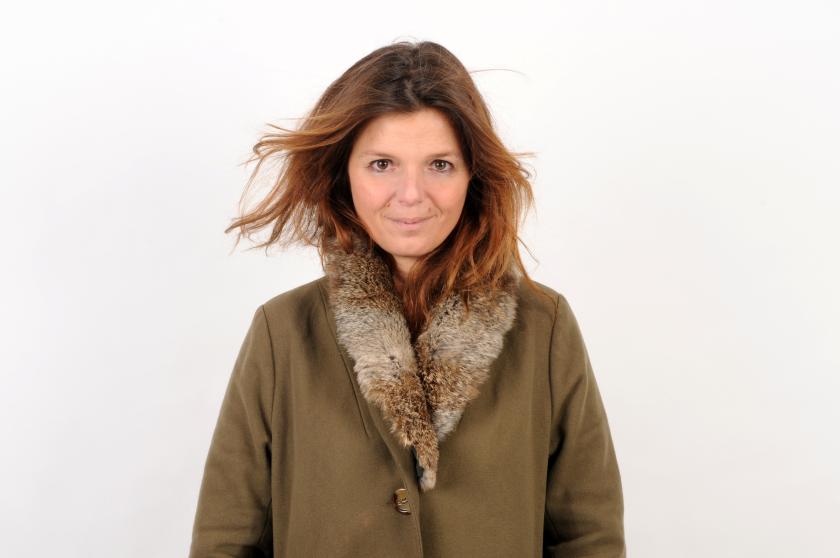"Trompe-l’œil," explains the director of the Institut de Peinture in Brussels, “is the meeting of a painting and a gaze, conceived for a particular point of view, and defined by the effect it is supposed to produce”. In layman’s terms, it is the art of decorative painting, the technique of creating an optical illusion whereby a surface appears three-dimensional. It’s also the subject of this book. Painting Time, Maylis de Kerangal’s latest novel, translated by Jessica Moore, is an ode to that somewhat overlooked side of the artist’s craft, a determined evocation of the skill, dedication and vision it takes to create “the ultimate replica”.
Paula Karst never knew she had a talent for decorative art. After spending the first years of her adulthood searching unsuccessfully for a calling, she settles on a whim for the Institut de Peinture and is at once drawn into the whirlwind of student life at what (I am told by the real-life Institut’s website) is “the only school in the world to teach the traditional techniques of decorative painting”. She makes one or two close friends, graduates, hunts for work, and is soon beset with job after temporary job.
 We quickly learn that such a mundane thing as plot is not at the forefront of the author’s concerns. Like any good modern-day French writer, de Kerangal is well aware of the potential irony of her subject matter. Making something two-dimensional appear three-dimensional? The simulation (on a film set) of an entire street, city, world? These are just as much the tasks of the novelist as of the set painter. The effusiveness with which Paula, and through her, de Kerangal, describes the construction of sets designed to portray medieval Florence or 20th century New York far outweighs any of the description of Paula’s own world. We’re rushed through Paris, Brussels, Turin and Rome, without a thought for their attractive scenery beyond the narrow street on which Paula happens to be walking. It makes for a curiously lopsided narrative, which never allows the reader to grasp onto anything they can consider safely "real". All the while, we are reminded that Paula’s vocation is not so dissimilar from her creator’s.
We quickly learn that such a mundane thing as plot is not at the forefront of the author’s concerns. Like any good modern-day French writer, de Kerangal is well aware of the potential irony of her subject matter. Making something two-dimensional appear three-dimensional? The simulation (on a film set) of an entire street, city, world? These are just as much the tasks of the novelist as of the set painter. The effusiveness with which Paula, and through her, de Kerangal, describes the construction of sets designed to portray medieval Florence or 20th century New York far outweighs any of the description of Paula’s own world. We’re rushed through Paris, Brussels, Turin and Rome, without a thought for their attractive scenery beyond the narrow street on which Paula happens to be walking. It makes for a curiously lopsided narrative, which never allows the reader to grasp onto anything they can consider safely "real". All the while, we are reminded that Paula’s vocation is not so dissimilar from her creator’s.
This process of narrative destabilisation allows de Kerangal to get wholly swept up in her world-within-a-world. “These are the false ruins of real ruins, the real ruins of false ruins,” exclaims the awestruck narrator on her way through the disused sets in Paula’s Roman workplace. The long, fast-paced sentences seek to suck the reader in, and enable the author to create some wonderful moments such as Paula’s amble through famous film and TV sets spanning continents and centuries, a vivid testimony to the saturated digital content of the day.
Occasionally, though, it all becomes a bit too much – for Paula and the reader. Just as often as it pulls you in, the narrative blocks you out. Its unceasing intensity makes reading feel a little too much like a battle; above all, this is a novel that needs its reader to feel totally involved in its artistic vision. Otherwise, some of the imagery doesn’t quite come off: if you’re swept up in the moment, perhaps describing the culmination of a romance as a “cosmic embrace” might seem suitable; perhaps Jonas asking Paula “to imagine a time when humans would be nothing but a distant memory, a time when they would be no more than myths, legends, spectres in the stories of creatures that now walked the earth” might seem the natural thing to ask. But all too often it pushes the reader back and strains the story’s plausibility.
If the author makes life difficult for the reader, the translator has an even harder job. On the whole, Jessica Moore’s translation feels natural and rings with a nicely French cadence, following the original in its many winding sentences. But every now and then it jars. A heavy presence of technical or scientific vocabulary is not unusual in colloquial French, but rarer in English and seems to alter the tone unwittingly. Some of the imagery, too, just doesn’t quite work. To describe how Paula’s left eye "limps" is nicely evocative, but then to suggest it "slips to the side like someone sinking onto a bank of fresh grass at the edge of the path" seems to be going too far. Very occasionally the translation feels too close to the French, and a little awkward for the anglophone reader.
The reader, then, is presented with a problem that is a complete reversal of that classic question posed at the graduate’s job interview. That is, the greatest strength of Painting Time is also its greatest weakness. The indulgent, even obsessive style of narration is this novel’s raison d’être – but when that indulgence is taken too far, the immersion falters. Ironically, the single most gripping part of Painting Time is the only demonstrably true event: the story of the discovery of the ancient wall paintings at Lascaux. For a novel determined to convince its reader of the beauty in mimicry, this cannot augur well.
- Painting Time by Maylis de Kerangal, translated by Jessica Moore (MacLehose Press, £16.99)
- Read more book reviews on theartsdesk















Add comment